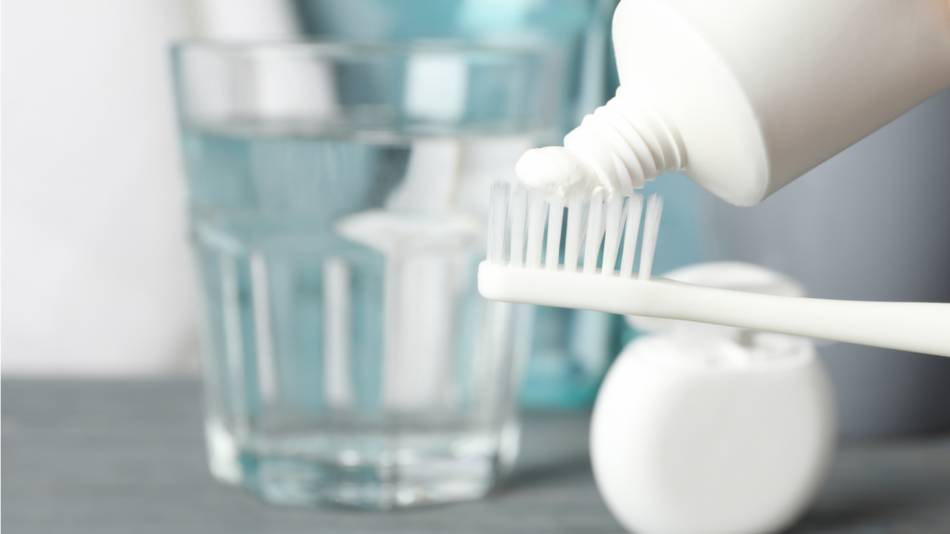Our Members Asked:
Can fluoride in toothpaste, mouth rinses or drinking water cause attention-deficit/hyperactivity disorder (ADHD) in children?

Answer:
Some research has linked community water fluoridation with increased risk of ADHD in children. However, there are no high-quality studies showing that fluoride in drinking water, toothpaste or mouth rinses causes ADHD. Experts consider regular use of fluoride from these sources to be effective for preventing dental cavities (i.e., dental caries), and the only health risk known to occur with excessive use is fluorosis, a condition in which teeth and bones become brittle due to excess fluoride.
Positions of the CDC and ADA:
According to the CDC, "there is no association between water fluoridation and any unwanted health effects other than dental fluorosis" (CDC Community Water Fluoridation FAQs). The American Dental Association (ADA) also considers community water fluoridation to be safe in children and adults. Use of fluoride-containing toothpaste and mouth rinse is recommended by the ADA for children, although it notes that, since these topical products contain more concentrated fluoride (about 1,000 to 1,500 ppm for toothpaste and about 230 ppm for mouth rinse compared to 0.7 ppm recommended for public water supplies), parents should use "no more than a smear" of toothpaste for children younger than 3 years, and only a pea-sized amount for children ages 3 to 6 years; mouth rinses should be used only in children 6 years and older. These concerns, however, relate to the risk of fluorosis not ADHD (ADA, Fluoride: Topical and Systemic Supplements).
Controversies and mixed findings:
One study that surveyed parents in the U.S. found a greater prevalence of ADHD in states in which more people received fluoridated water from public water supplies (Malin, Environ Health 2015). However, this study has been criticized for not considering all potential risk-modifying factors, such as state altitude, prevalence of other comorbid conditions (i.e., obesity, low birth weight, depression, or anxiety), the percentage of people uninsured, ethnicity of the population, percentage of people living in a two-parent household, education level, and smoking status of the adults. When the same data was re-analyzed taking these covariables into consideration, there was no association between community water fluoridation and risk of ADHD (Perrott, Br Dent J 2018). Nevertheless, another study in Canada found that a 1 mg/L (about 1 ppm) increase in concentration of fluoride in tap water was associated with a 6.1 times greater chance of ADHD diagnosis. Interestingly, however, levels of fluoride in the urine were not associated with risk of ADHD diagnosis (Riddell, Environ Int 2019). It is important to keep in mind that these studies show only a possible correlation between fluoridated exposure and ADHD, but they do not prove that fluoride causes ADHD.
A study in California among 229 pregnant women found that higher fluoride levels in their urine , a biomarker of fluoride exposure, during the third trimester of pregnancy was linked with a greater risk behavioral problems in their offspring by the age of three. The associated behavior issues, as reported by the mothers, included emotional reactivity (i.e., tendency to overreact), anxiety problems, somatic complaints (e.g., headaches or stomachaches), and autism-like symptoms (which is not the same as an autism diagnosis), but there was no increased risk of ADHD problems, depression problems, or oppositional defiant problems, and the overall increase in behavioral scores was small — only about a 2-point increase on a scale of 28 to 100 (Malin, JAMA Netw Open 2024).
Some ConsumerLab readers have pointed us to information from Fluoride Action Network, a mainly volunteer-run organization "dedicated to protecting public health by ending water fluoridation," which claims that research conducted by the National Toxicology Program (NTP), a branch of the National Institutes of Health or NIH, found "that fluoride is presumed to be a cognitive neurodevelopmental hazard to humans." This is misleading for several reasons. First, the NTP's monograph is still only a draft, despite having first been written in 2019. Second, the reason why the monograph has not yet been officially published is because of significant concerns raised by reviewers of numerous drafts. The National Academies of Sciences, Engineering, and Medicine (NASEM), which is considered a gold standard for peer review, reviewed the draft in 2020 and again in 2021 and reported that some of the conclusions of the review were not adequately supported by the data and that the NTP's conclusions about fluoride exposure and cognitive health were based on studies that involved high fluoride concentrations and could not be used to make conclusions about the effects of fluoride at lower concentrations (below 1.5 PPM), such as those recommended for public water supplies (0.7 PPM) (NASEM Review, 2020; NASEM Review, 2021). Third, the NTP itself has published abstracts stating that, for children, "...effects on cognitive neurodevelopment are inconsistent, and therefore unclear" when based on data from studies involving low fluoride exposure and that, for adults, "There is inadequate evidence to determine whether fluoride exposure lowers IQ or impairs cognitive function" (Taylor, ISEE Conference Abstracts 2020). In 2023, a panel convened by the NTP to review its latest draft determined that many of the NTP's latest responses to reviewers' comments were still inadequate and required revisions (NTP BSC, 2023).
Other sources of fluoride:
Keep in mind that other dietary sources, such as tea, can contain small amounts of fluoride. Drinking very large amounts of green tea and, to a lesser extent, black tea, on a daily basis may cause fluorosis. For details, see the Concerns and Cautions section of our Green Tea Supplements Review.
Also see:
Also see the results from our tests of popular water filter pitchers, showing how much fluoride they remove from drinking water.
In addition, check out our article "Which ingredients should toothpaste contain, and which should be avoided?" to learn whether or not "natural" products or tooth powders are safe and effective for cleaning teeth.
Join today to unlock all member benefits including full access to all CL Answers and over 1,400 reviews.
Join NowAlready a member? Sign In Here.
Join now at www.consumerlab.com/join/







Submit your comment
This feature is restricted to active members.
Join now to add comments and get all member benefits, including over 1,400 reviews.
Join NowAlready a member? Sign in here.